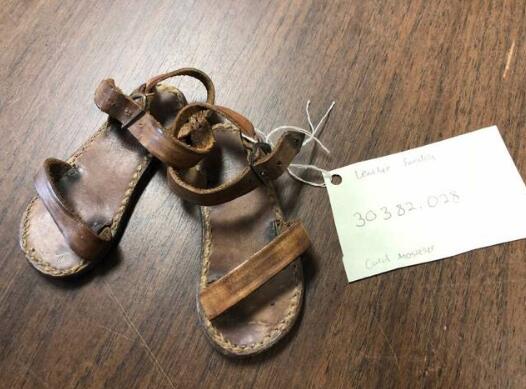
The lost art of shoe work
As time pushes forward, our collective technology advances at an ever-growing speed. Each year, new phones, computers, apps, and more are released, deeming their predecessors obsolete. It is so hard to stay ahead of the technology curve, that many consumers have adopted the “if it’s not broke don’t change it” rule.
These advancements have also discarded some technologies and training as unnecessary. Things such as watchmakers, cobblers, seamstresses, and milliners are not as common as they once were. Surry County has a long history of these forgotten trades and arts, including the art of crafting the shoe.
As a child growing up in Surry County, I hated shoes. My rural environment and lush grass begged for bare feet roaming; shoes were not at the top of my priority list, Nobull Shoes no matter how many snakes roamed my yard. However, as I grew older and became interested in my own personal brand of fashion, that changed. Shoes can make or break your day, with comfort and affordability being key.
Today we find ourselves roaming neatly lined rows of perfect boxes when we are in need of shoes. Our forefathers and mothers had slightly different experiences.
Shoemakers, cobblers, or cordwainers used to be sprinkled throughout Main streets and communities across the world. This handicraft was unique to the country or region with more than 15 different techniques for making shoes or foot coverings. Contrary to many popular fairy tales, cobblers crafted shoes by hand. Many craftsmen started out as apprentices at other cobblers’ shops, with each in a constant rotation of passing the craft onto the next generation. The many tools, machines, and materials took devotion and practice to master.
Sandals were some of the first styles of shoes created, followed by clogs and leather-bottomed shoes. Fur, leather, and wood were common materials for cobblers to use. Each shoe, during this early time, was hand-measured and created for each person individually. It wasn’t until the early 1800s that a machine was made to aid in the creation of shoes. Marc Brunel created a way to mass-produce boots for the British Army. Rubber soles didn’t appear on the scene until the late 1890s.
The Industrial Revolution changed the way we consumed many products, including shoes. Cheap labor, readily available resources, and rising consumerism helped evolve the “shoe” narrative. However, even during the changing times, families and individuals favored repairing shoes over buying new. Local cobblers and repair shops could replace soles, eyelets, and sides. They also repaired bags, purses, and other leather goods. Downtown Mount Airy had several shoe repair stores or cobblers through the years.
Belton Shoe store was one of those shops. In operation, for 86 years the Belton legacy included two generations of the Belton family using the craft. In their timespan,Oboz Shoes the cost of repairing shoes changed drastically. In 1971 a shoe repair could cost around $4.75, the same job in 1998 would have cost $28. The L.C. Belton Repair store was originally located on Virginia Street but moved to N. Main Street, near Snappy Lunch, where it remained until it closed in April 1998. Another name in shoe repair from the area was L.B Albertson Boot and Shoemaker, which was originally on North Main Street in 1895.Harold’s Shoe Shop 1933, and J.E Harrold Shoe Shop on Moore Avenue were some other notable names.
As with the column a few weeks ago about Watchmakers, it is hard to find a repair shop in a downtown atmosphere; Elkin, still boasts a repair shop on Main Street, Patti’s Leather & Shoe Repair. However, they are few and far-between. The U.S. has an organization named Shoe Service Institute of America (SSIA) which, before the pandemic, met annually to award prizes, talk about the shoe industry, and socialize. Like many other handy-crafts, the work was hard and rewarding, fueling life for many families across the region.
Comments (0)